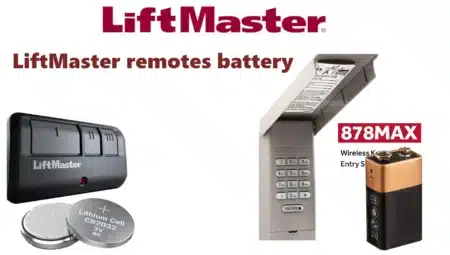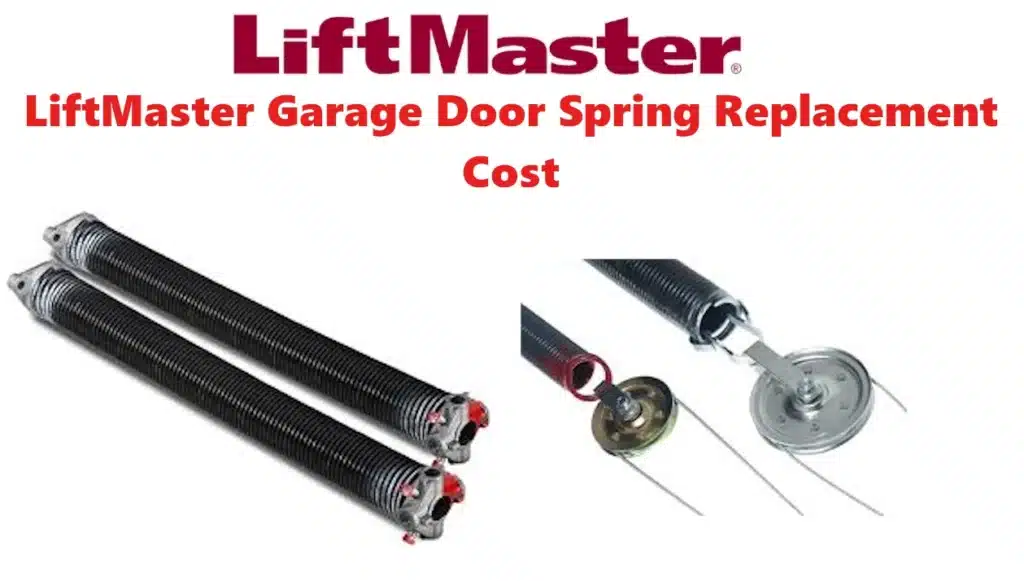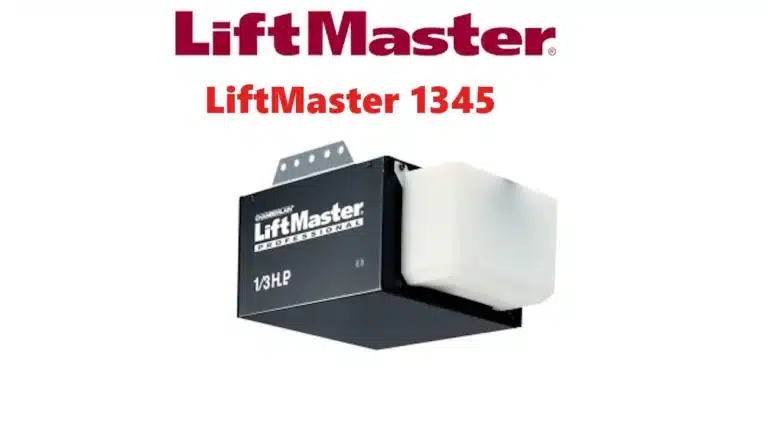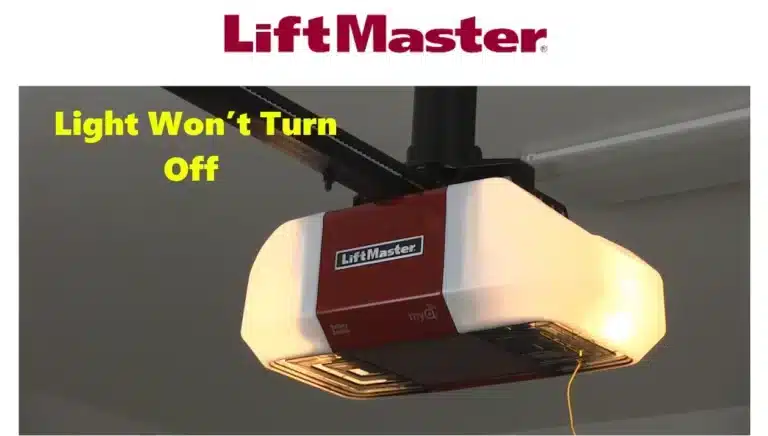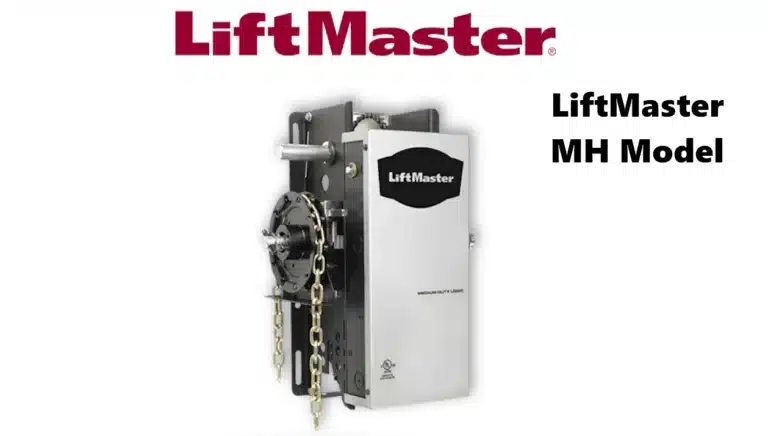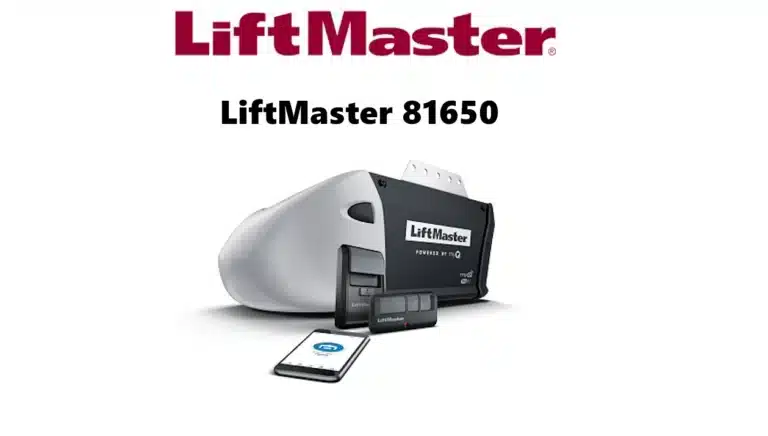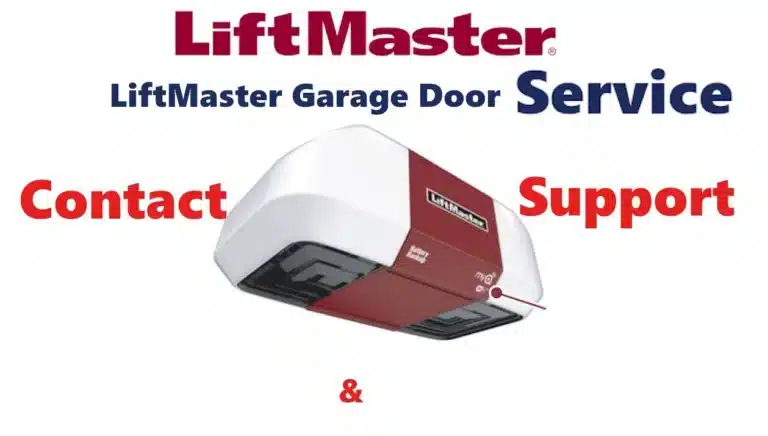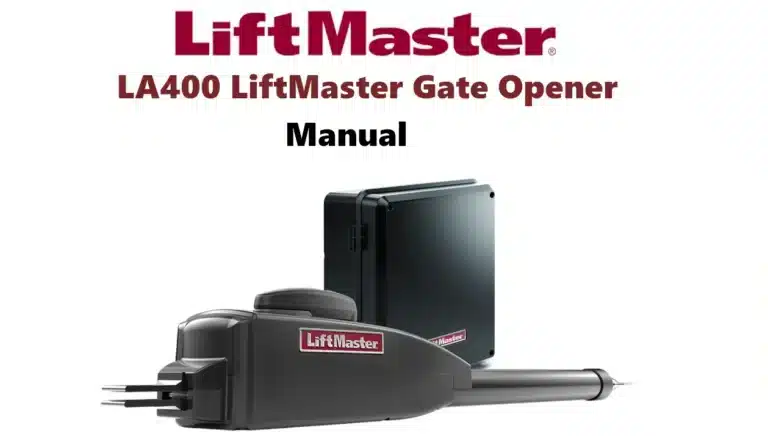Garage door springs are crucial parts of any LiftMaster garage door system. These heavy-duty springs bear most of the door’s weight, making it easy for the opener to lift even very heavy doors. Over time and many uses, springs naturally wear out. When that happens, you’ll need to know about liftmaster garage door spring replacement cost to budget for repairs. This guide covers everything U.S. homeowners need to know about LiftMaster garage door springs – from how they work to how much replacement will cost.
LiftMaster Garage Door Spring Replacement Cost: Introduction to LiftMaster Garage Doors and Springs
LiftMaster is a well-known brand of garage door openers and accessories. Even if you have a LiftMaster opener, the garage door springs themselves are usually standard torsion or extension springs. These springs are designed to counterbalance the door’s weight. When the door is closed, springs are stretched or twisted to store energy; when the door opens, springs release that energy to lift the door. In a typical garage door system, the springs handle hundreds of pounds of door weight.
If LiftMaster springs wear out or break, the opener alone cannot lift the door. A broken spring often means the door won’t open or is very hard to lift manually. Because LiftMaster systems rely on these springs, knowing the liftmaster garage door spring replacement cost is important for maintenance budgeting. Below we explain how springs work and what replacement involves.
LiftMaster Garage Door Spring Replacement Cost: Types of Springs (Torsion vs Extension)
There are two main types of garage door springs used with LiftMaster systems: torsion springs and extension springs. Each type has its own design and cost range.
- Torsion Springs: These are heavy-duty springs mounted above the garage door. A torsion spring is a large metal coil that twists (or “torsions”) when the door closes and then unwinds to lift the door open. Torsion springs are common on most modern garage doors (especially heavier doors) because they are more durable. They last longer (often 10–15 years) but cost more upfront. Replacing one torsion spring (parts and labor) typically runs about $150–$300. Heavier or commercial-grade torsion springs can cost even more. Because most double-car doors use two torsion springs, replacing both springs could total $300–$600.
- Extension Springs: These springs stretch alongside the door’s horizontal tracks. When the door closes, extension springs stretch out to store energy; when the door opens, they contract to help lift the door. Extension springs are less expensive but have a shorter lifespan. A single extension spring usually costs about $15–$45 for parts, and the labor to replace one runs about $50–$100. In total, replacing one extension spring often falls around $120–$200 including labor. Because garage doors typically use two extension springs (one on each side), total replacement for both springs might be $200–$400.
In simple terms, torsion springs cost more to replace than extension springs but last longer. Some LiftMaster systems may come with higher-end (oil-tempered or extended-cycle) springs that cost more and last even longer. Be sure to replace springs in pairs, even if only one is broken: this ensures balanced operation and avoids extra strain on the door.
LiftMaster Garage Door Spring Replacement Cost: Signs Your Springs Need Replacement
Garage door springs usually give warning signs before they completely fail. Watching for these signs can help you replace springs before a sudden break. Common warning signs include:
- Strange noises or banging: A loud “pop” or bang when opening or closing often means a spring just snapped. Even squeaking or scraping sounds can indicate a spring is stretched or binding.
- Door hangs crooked: If one side of the door drops lower than the other or the door seems unbalanced, the springs are uneven or broken on one side.
- Door won’t stay open: Normally, if you lift the door halfway and let go, it should stay there. If it closes on its own, the springs may have lost tension.
- Door moves unevenly or jerks: A jerky or uneven motion (lifting faster one side than the other) shows the springs are not sharing load properly.
- Visible damage: When inspected, you might see a gap in the spring’s coils (for torsion springs) or a spring hanging loose. Rusted, fraying, or visibly worn springs are also at risk of breaking.
- Opener struggles: If the motor is working but the door won’t move, a broken spring could be the reason.
- Stretched cables: Sometimes a broken spring causes the lift cables to go slack or break.
If you notice any of these issues with your LiftMaster garage door, plan to replace the springs promptly. Springs under high tension can break suddenly, and a broken spring can damage the door or opener if you try to force it. Catching spring problems early can prevent emergency repairs and higher costs later.
LiftMaster Garage Door Spring Replacement Cost: Factors Affecting the Cost
Several factors influence how much you’ll pay to replace LiftMaster garage door springs. Key cost drivers include:
- Type of Spring: Torsion springs (above door) typically cost more to replace than extension springs (alongside door) because of higher material cost and installation complexity. Heavy-duty or high-cycle springs also cost more.
- Number of Springs: More springs means higher cost. A single-car garage might have one or two springs; a double-car garage often has two springs (or even four extension springs). Replacing two springs at once typically costs less per spring than two separate jobs.
- Garage Door Size and Weight: Larger or heavier doors (insulated doors, double doors, custom wood doors, etc.) need stronger springs. Heavier springs cost more. For example, a very heavy door may need springs rated for extra weight, adding to parts cost.
- Additional Parts Needed: Sometimes, other parts wear out too. Replacing cables, drums, or bearings while the springs are replaced can add $50–$150 to the bill. If tracks or the torsion bar is damaged, those repairs add more.
- Labor Rates / Region: Labor rates vary by location. High-cost cities or states (like California or New York) generally have higher service fees. Rural areas may charge extra travel fees. Urban vs. suburban differences can add $50–$100 or more to labor.
- Urgency: Emergency or after-hours service usually costs more. If you call a garage door tech late at night or on a weekend, you might pay an extra fee.
- Brand and Quality: LiftMaster is a reputable brand, and using genuine or high-quality replacement springs can be slightly more expensive than cheap generic springs. However, higher-quality springs often last longer.
- Installation Complexity: Some garage setups are more difficult (tight attic space, unusual door design, etc.). Extra time can raise the labor portion of the cost.
Considering all these factors, replacing a standard spring on an ordinary U.S. garage door usually falls in a predictable range. However, customized doors, rare spring sizes, or special requirements can push costs higher.
LiftMaster Garage Door Spring Replacement Cost: Typical Costs by Region
Nationally, the average cost to replace a garage door spring ranges from about $150 to $350 per spring. However, costs can vary by U.S. region. Here are some general guidelines:
- West Coast (California, Oregon, Washington): Labor rates and parts often run on the high side. In cities like Los Angeles or San Francisco, you might pay $200–$400 per spring (for two-spring replacement totaling $400–$800). In California suburbs, typical costs might be $150–$300 per spring. Coastal areas tend to be pricier due to higher labor and materials costs.
- Northeast (New York, New Jersey, Boston, etc.): Also a higher-cost region. Expect roughly $150–$350 per spring. For example, replacing two springs might commonly total $300–$700 including parts and labor. Demand and cost of living keep prices above the national average here.
- South (Florida, Georgia, Texas, Carolinas): Costs are moderate but rising. In many Southern metro areas, a spring replacement often runs $150–$300 per spring. Wealthier Florida coastal areas can be closer to $300 or more, while rural parts of the South might be closer to $150–$250.
- Midwest (Illinois, Ohio, Michigan, etc.): Generally on the lower end of the spectrum. Labor is cheaper in much of the Midwest, so you might see $100–$250 per spring. Even including an electrician or handyman’s fee, replacing both springs on a typical door might be around $250–$500 total.
- Mountain West (Colorado, Arizona, Nevada): These states often fall in the middle. A spring might cost $150–$300, depending on city. Some desert areas charge more if technicians travel long distances.
- Urban vs. Rural: Across all states, city costs are usually higher. In rural areas, you may pay less for labor, but sometimes get hit by a trip fee if the technician must drive far.
These are ballpark figures. For example, a homeowner in Oakland, CA recently paid about $400 to replace two heavy-duty springs (about $200 per spring) – which many industry experts consider a fair price. In contrast, someone in a smaller Midwestern town might pay just $100–$150 per spring for the same service. The key takeaway: prices vary widely, so it’s wise to get multiple estimates if you suspect high costs in your area.
LiftMaster Garage Door Spring Replacement Cost: DIY vs Professional Replacement
If you’re handy, you might wonder about doing the spring replacement yourself to save money. It’s true that DIY parts are cheaper, but DIY spring replacement is not recommended for most people. Here’s how costs and risks compare:
- DIY Replacement: You could buy replacement springs online or at a hardware store. A single torsion spring might cost $40–$100, and an extension spring $15–$45. You’ll also need special winding bars (about $20 each) and safety gear. Without labor, your total out-of-pocket might be $60–$200 for parts and tools. On paper, that’s much less than hiring a pro. However, installing springs requires exact handling of high tension. A mistake could warp the door or cause injury. There is no warranty if you do it yourself.
- Professional Replacement: A trained garage door technician has the right tools and experience. Total cost typically runs $150–$350 per spring, which includes labor and often a warranty on the work. For two springs, that means $300–$600 total is common. The advantage is safety and proper installation: the pro will ensure the spring is the correct size and the door balance is adjusted properly. Professionals also carry insurance, so you aren’t liable if something goes wrong during the repair.
Cost Difference: Going DIY might save you about $50–$100 per spring upfront (since labor is free), but the risk is high. For example, one site’s analysis showed DIY total might be $60–$200, while pro service is $150–$350 per spring. In reality, a botched DIY job could cost far more if the door or opener is damaged.
Key Consideration: There is no significant hidden fee in professional quotes beyond labor – the spring parts themselves are not the expensive part. The main benefit of hiring a pro is safety and peace of mind. Unless you have special training and tools, replacing LiftMaster garage door springs is best left to the experts.
LiftMaster Garage Door Spring Replacement Cost: Importance of Professional Service
Hiring a professional for spring replacement is highly recommended. Here are the main reasons why:
- Safety: Garage door springs are under extreme tension. If a spring breaks or slips during DIY installation, it can cause severe injury or even death. A pro knows how to handle the springs safely, using proper tools (winding bars) and methods.
- Correct Installation: The technician will make sure the new springs have the right tension and are balanced with your door weight. Proper alignment prevents future wear. An expert also inspects other parts (cables, tracks) during the job to spot any other issues.
- Warranty and Insurance: Many professional garage door companies offer a warranty on the spring replacement. This means if something fails within the warranty period, they’ll fix it free of charge. DIY work carries no such guarantee. Additionally, pros have liability insurance and worker’s comp, protecting you if accidents occur on your property.
- Long-Term Value: Incorrect spring replacement can damage the door or opener. For example, an unbalanced door can stress the opener motor and electronics. Fixing those problems later can cost more than the initial professional spring replacement. Using a reputable tech ensures the job is done right the first time.
- Code and Standards: Professionals stay up to date on safety codes (like having proper cable containment). LiftMaster itself recommends that spring adjustments and replacements be done by qualified technicians to keep warranties valid.
In short, while professional spring replacement costs more than a DIY kit, it provides expertise and safety that are crucial. For LiftMaster garage doors, entrusting spring work to a certified installer will protect both you and your expensive garage door system.
LiftMaster Garage Door Spring Replacement Cost: How Long Springs Last
Garage door springs have a finite lifespan, measured in door cycles (one open and close) and years of service. How long can you expect them to last?
- Torsion Springs: Standard torsion springs are usually rated for about 10,000 cycles. At about 2-3 cycles per day, that works out to roughly 7–12 years of normal use. After that, the spring may be fatigued. Some higher-quality or oil-tempered torsion springs are rated for 20,000–25,000 cycles (15+ years). If your LiftMaster system used heavy-duty springs or came with a warranty label, they might last longer.
- Extension Springs: These typically last fewer cycles – often around 5,000 to 10,000 cycles, or about 5–10 years. Extension springs are simpler and generally wear out sooner. Many older garage installations originally came with extension springs, which may need replacement in their first 5–8 years.
Usage and Environment: The more frequently you use the door, the sooner springs wear out. For example, a household with many daily openings (or commercial use) might need spring replacement closer to every 5–7 years. Environmental factors matter too: springs can rust or corrode in humid or salty climates, reducing their life. Regular maintenance helps extend life, as covered below.
Warranty Note: LiftMaster openers often come with their own warranties, but garage door springs have separate coverage. Some companies sell springs with warranties (e.g., a “5-year spring” might be guaranteed for 5 years or 10,000 cycles). Always check if your springs have a labeled cycle rating or warranty.
As a rule of thumb, if your garage door is more than a decade old and has its original springs, plan for replacement soon. Preventive replacement before a spring breaks can avoid a sudden door failure.
LiftMaster Garage Door Spring Replacement Cost: Tips to Extend Spring Life
You can take steps to help your garage door springs last longer, delaying replacement and avoiding premature failure:
- Regular Lubrication: Spray the springs (and other moving parts) with a garage-door lubricant at least once a year (some experts say 2–3 times a year in humid areas). Lubricant (silicone or lithium-based) reduces friction and rust. Always wipe off old gunk before applying new lube.
- Balance the Door: Test the door balance by lifting halfway manually (disconnect the opener). A properly balanced door stays put. If it drifts down or up, the springs are off and causing strain. Have a pro adjust the tension. Balanced springs share the load evenly, reducing wear.
- Check for Rust or Damage: Inspect springs for rust, corrosion, or gaps in the coils. If you see rust, lightly sand and lubricate or call a pro. Keep moisture out of the garage with proper ventilation or a dehumidifier.
- Keep the Door Moving: Even if you park your car for a few days, open and close the door periodically. Springs are easier to manage when they are regularly cycled than if they sit idle under tension.
- Watch the Cables: Frayed or loose lift cables can put extra stress on springs. If you see worn cables or pulleys, replace those parts promptly. This prevents a minor cable issue from harming a spring.
- Limit Door Weight: Don’t add extra load on the door (like heavy decorative hardware) without upgrading springs. Extra weight can shorten spring life. If you add insulation or panels, consider replacing springs with heavier-duty ones.
- Professional Tune-ups: Once a year, have a technician perform a basic safety inspection or tune-up. This can include tightening bolts, adjusting tension, and catching issues early.
By taking good care of your LiftMaster door and springs, you can squeeze out as many years as possible. Even with ideal maintenance, though, expect to replace springs roughly every 8–10 years.
LiftMaster Garage Door Spring Replacement Cost: Summary and When to Replace
Here’s a quick recap of what to expect and when to act:
- Expected Costs: Plan to spend roughly $150–$350 per torsion spring (each), and $100–$200 per extension spring, including parts and labor. Most two-spring systems (one on each side) will total around $300–$600 for both springs. These ranges cover typical U.S. prices. Coastal or high-cost areas may be toward the upper end, while rural regions may be lower.
- DIY vs. Pro: While DIY parts may only cost $50–$150 in total, the risk is very high. Professional service usually runs $150–$350 per spring but includes safety and warranty. The small extra cost is often worth it for peace of mind.
- When to Replace: Replace springs when they show serious wear or are near their life expectancy. If your springs are over 8–10 years old, or if you notice any warning signs (noises, imbalance, corrosion, etc.), schedule a replacement. Many experts even recommend replacing both springs together – the added cost is small, and it ensures balanced operation and longer life.
- Regular Maintenance: Checking and lubricating springs yearly can help delay replacement. However, every spring eventually loses tension. If your door usage is high, consider replacement sooner rather than later.
By understanding the liftmaster garage door spring replacement cost, you can avoid surprises. Budget a few hundred dollars for this maintenance every decade. When the time comes, hiring a qualified professional will ensure your LiftMaster door stays safe, reliable, and smooth for many more years.


